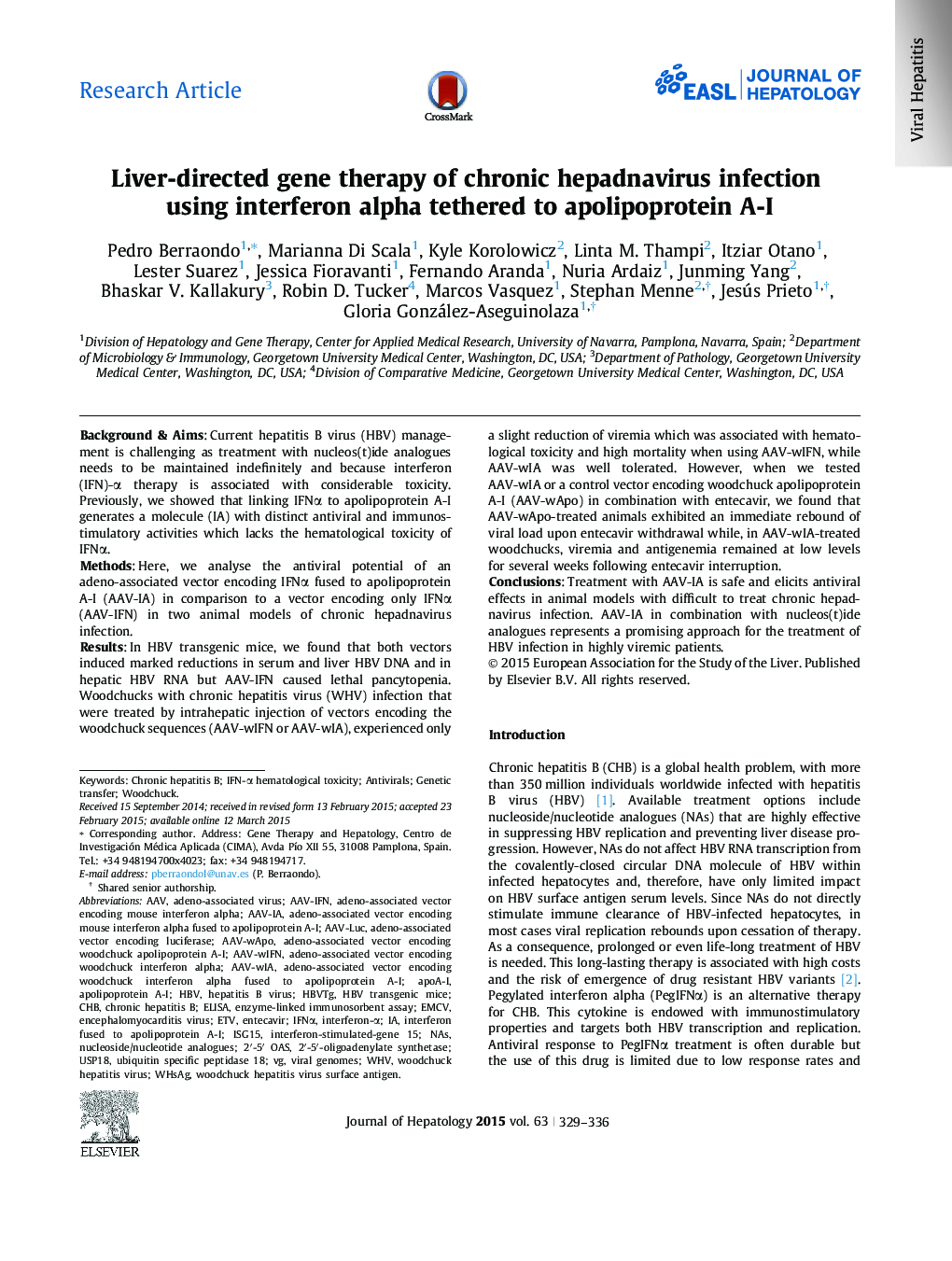| کد مقاله | کد نشریه | سال انتشار | مقاله انگلیسی | نسخه تمام متن |
|---|---|---|---|---|
| 6101498 | 1211106 | 2015 | 8 صفحه PDF | دانلود رایگان |

Background & AimsCurrent hepatitis B virus (HBV) management is challenging as treatment with nucleos(t)ide analogues needs to be maintained indefinitely and because interferon (IFN)-α therapy is associated with considerable toxicity. Previously, we showed that linking IFNα to apolipoprotein A-I generates a molecule (IA) with distinct antiviral and immunostimulatory activities which lacks the hematological toxicity of IFNα.MethodsHere, we analyse the antiviral potential of an adeno-associated vector encoding IFNα fused to apolipoprotein A-I (AAV-IA) in comparison to a vector encoding only IFNα (AAV-IFN) in two animal models of chronic hepadnavirus infection.ResultsIn HBV transgenic mice, we found that both vectors induced marked reductions in serum and liver HBV DNA and in hepatic HBV RNA but AAV-IFN caused lethal pancytopenia. Woodchucks with chronic hepatitis virus (WHV) infection that were treated by intrahepatic injection of vectors encoding the woodchuck sequences (AAV-wIFN or AAV-wIA), experienced only a slight reduction of viremia which was associated with hematological toxicity and high mortality when using AAV-wIFN, while AAV-wIA was well tolerated. However, when we tested AAV-wIA or a control vector encoding woodchuck apolipoprotein A-I (AAV-wApo) in combination with entecavir, we found that AAV-wApo-treated animals exhibited an immediate rebound of viral load upon entecavir withdrawal while, in AAV-wIA-treated woodchucks, viremia and antigenemia remained at low levels for several weeks following entecavir interruption.ConclusionsTreatment with AAV-IA is safe and elicits antiviral effects in animal models with difficult to treat chronic hepadnavirus infection. AAV-IA in combination with nucleos(t)ide analogues represents a promising approach for the treatment of HBV infection in highly viremic patients.
116
Journal: Journal of Hepatology - Volume 63, Issue 2, August 2015, Pages 329-336